I cannot even imagine my garden without lettuce! It is just such an easy vegetable to grow and requires no extra care. As long as I keep it watered and keep the rabbits away, it does so well every year. It is one of those vegetables that you can plant and forget and it just does so well.
- The best time to grow lettuce is when the weather temperatures are cooler, around 55-65F. At 70F and above the lettuce starts to bolt. Bolting means the lettuce starts to flower and produce seeds.
- When sowing lettuce seeds or planting lettuce seedlings, space them about 6 inches apart if growing head lettuce. Spacing of lettuce also depends on the variety, therefore always check the spacing recommended for the variety you are planting.
- For mixed lettuce salad that is to be harvested by collecting outer leaves, or by cutting off the tops bunched up, and is not meant to grow into heads, sow the seeds close to each other just by broadcasting or sprinkling them in a trench close to each other.
- Because lettuce seeds are very small, sow them shallow, only about 1/8 inch deep. Cover them with only a thin layer of soil and do not tamp them. Lettuce needs light and moisture to germinate. Most lettuce seeds germinate within 7-10 days.
- Spray the seeds with water or gentle shower flow. Keep the soil, especially the top of the soil moist at all times, but do not let the seeds sit in soggy soil.
- If sowing the seeds outdoors, protect the seeds from being eaten by pests. Cover the seeds with a carton, newspapers, frost cover, or netting.
- Once the lettuce reached its desirable size, harvest it. You can harvest the whole head of lettuce and plant a new one instead. Or you can use the cut and come again method, meaning harvest only outer large leaves, or simply bunch the largest leaves and cut with a sharp knife about 2-3 inches above the soil surface, give it a week or two, and come to harvest again.
- Protect the growing lettuce plants by covering them with netting. Many wild animals like to munch on sweet lettuce leaves.
- Water every other day, or once a day in hot weather. Fertilize regularly, about every week or every other week according to the fertilizer’s instructions.
- Lettuce is a great leafy green for any garden even containers and grow bags, balcony garden, or patio garden, as they do not require much space, have shallow leaves, and can grow well in partial shade.
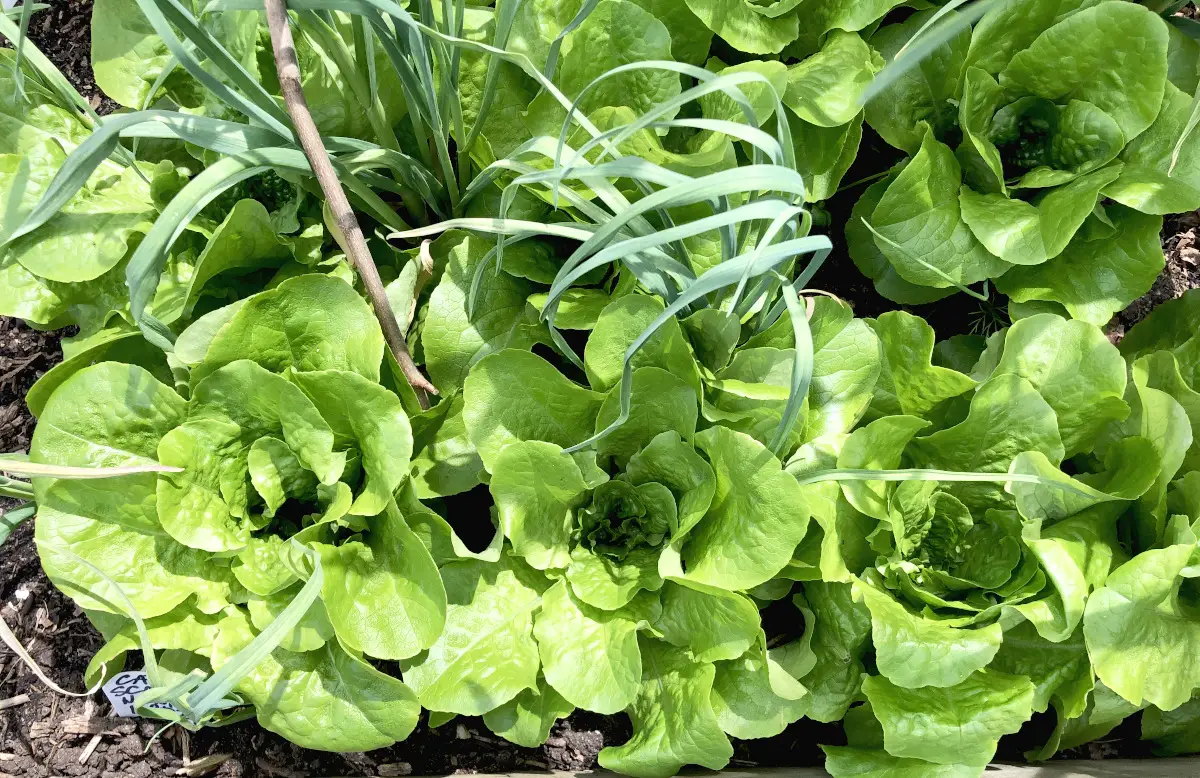
What lettuce to grow in hot weather
The best lettuce to grow in hot weather, and warm climates are loose-leaf varieties, or slow-bolting and heat-resistant varieties like Red Sweet Crisp, Green Sweet Crisp, Red Incised Green Incised, Cherokee, Magenta, Salanova, Muir, Slobolt, and Concept.
I grow mixed leafy lettuce, very densely and harvest them by bunching the longest leaves and cutting them off. I also grow Buttercrunch and harvest the whole head, if I do not feel like fuzzing with bunches of leaves, or if I want to impress guests or my husband. These two are my go-to lettuces and they do well in my growing space and warm humid weather.
What month do you plant lettuce?
Plant lettuce indoors in early spring in February. Plant seedlings outdoors in March or April, once the temperatures reach 40F during the day. Sow seeds directly outdoors about 4-2 weeks before the last frost date. Depending on the lettuce varieties, slow bolting or heat-tolerant lettuce can be sowed and grown throughout the whole growing season from early spring till late autumn.
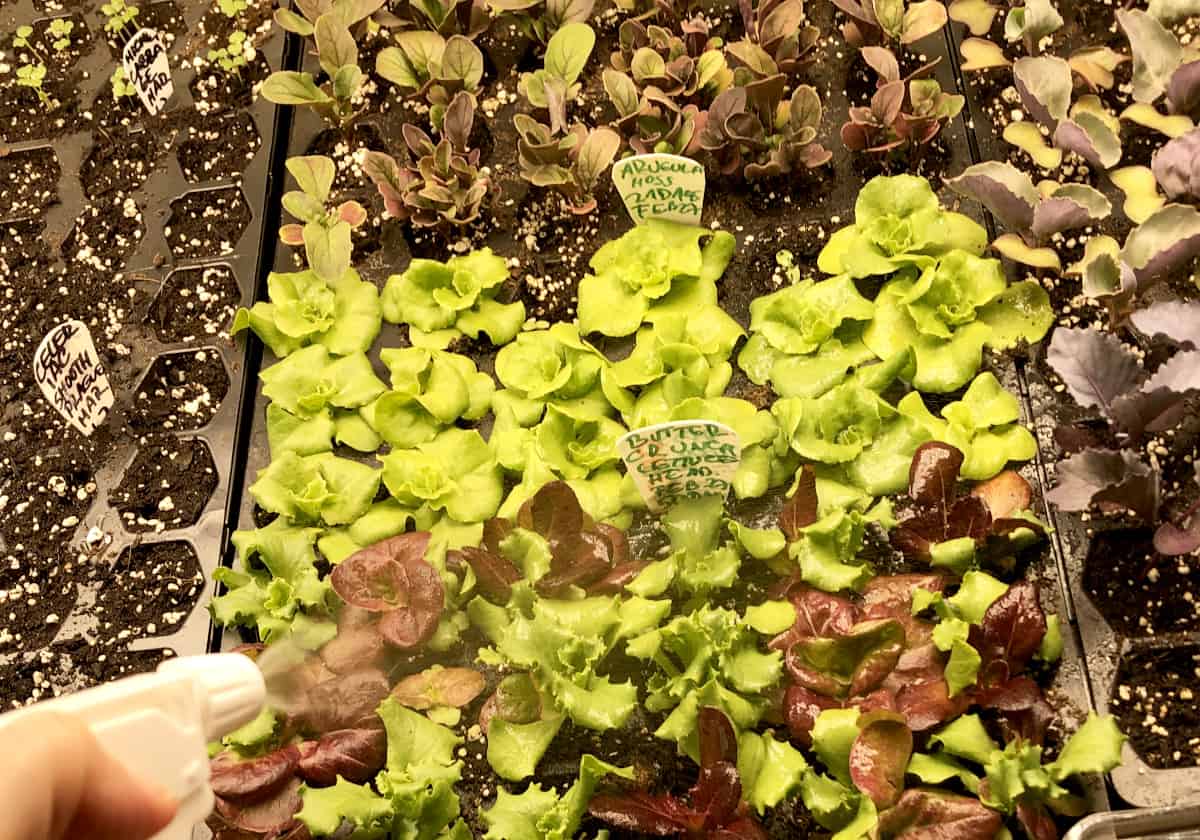
How long does lettuce take to grow?
Lettuce is one of the fastest-growing leafy vegetables. Baby lettuce leaves can be harvested as early as 30 days from sowing. Most lettuce heads will mature anywhere between 50-70 days from sowing.
I start to grow lettuce end of February indoors in seed trays and under grow lights. Around April 1st I aim to plant them outdoors after about a week or two of hardening off. April 1st is about one and a half months before my last frost date. Lettuce can tolerate some light frost and if needed, I cover it with frost cover at night if needed.
I sow lettuce again by direct sowing in my garden beds beginning to mid-May. I grow lettuce during the whole season from early spring till the hard frost takes it. I also save seeds every year.
A GOOD READ: This is how I prevent my seeds from being eaten by pests: How to prevent seeds from being eaten
How do you grow lettuce successfully?
Lettuce requires well-draining, fertile soil full of organic matter and a sunny location, although most lettuce will yield in partial shade. Lettuce likes moist soil and most lettuce varieties like cooler temperatures, depending on the variety. Use nitrogen-rich fertilizer to feed lettuce plants regularly.
Does lettuce need full sun?
Lettuce grows fastest in full sun; however, it does perform well and can even last longer in partial shade, especially when shaded from the harsh afternoon sun.
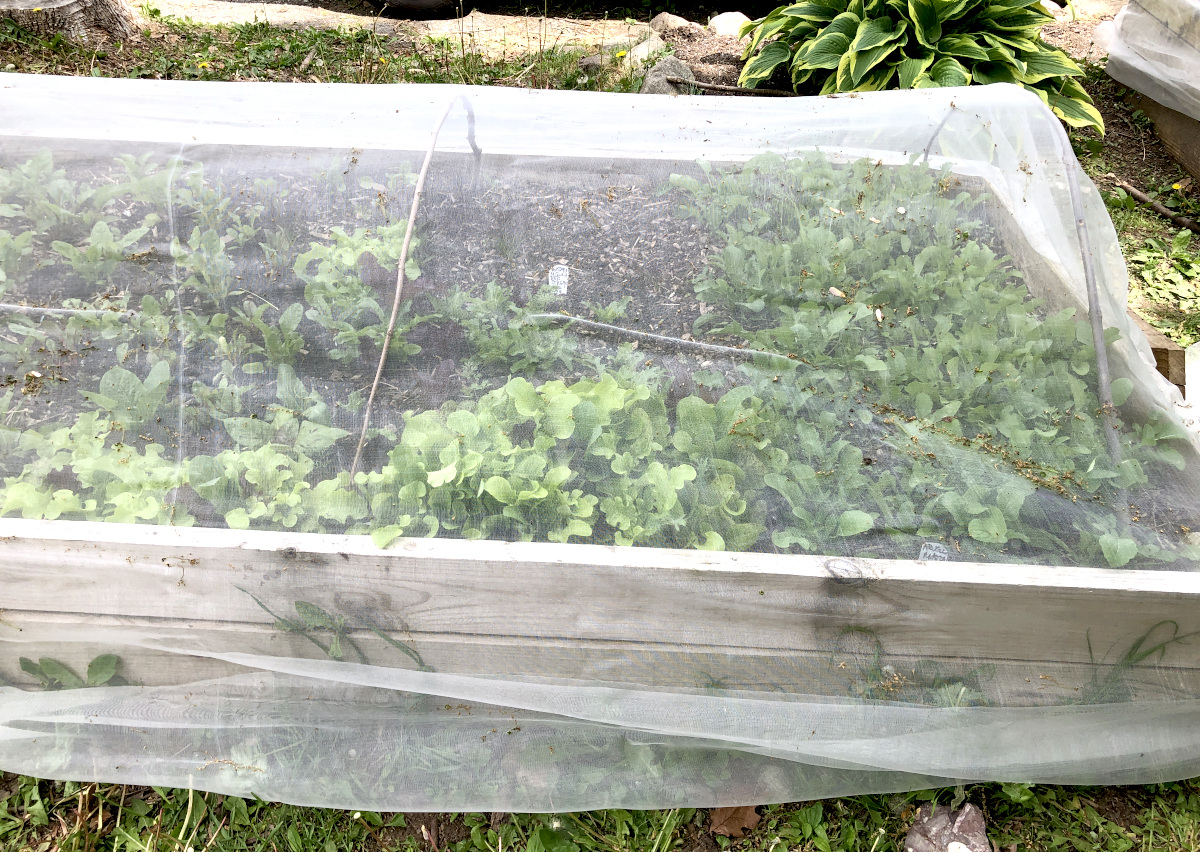
I like to plant lettuce in garden beds that get the least sun exposure in my growing space, simply because my space is limited and I prefer to save the sunniest spots for vegetables that simply must get the most sun exposure. When it comes to lettuce, it does well with partial shade, so I use garden beds that get just that to grow my lettuce in. This way, I do not have to protect my lettuce with shade cloths, I do not have to water it that often and it does not wilt during the hot weather.
Do you have a spot in your garden that you think needs something growing in it but does not get enough sun? Try growing lettuce in that space, the results just might surprise you.
It might surprise you, but I grow lettuce as my mulch crop! If I need the soil covered around a tall plant, I grow lettuce there. Lettuce is shallow-rooted and does spread wide, it is a perfect live mulching crop around tomatoes, peppers, and other tall plants. Plus, as I plant lettuce around a heavy feeder plant, I do not need to fertilize lettuce at all as it pulls nutrients from the soil as I feed the main plant. Because lettuce is not a heavy feeder, the main plant does not suffer nor compete with lettuce, and both crops do well.
What is the easiest lettuce to grow?
Buttercrunch and lose leafy lettuce mix is a great variety and easy to grow for beginners.
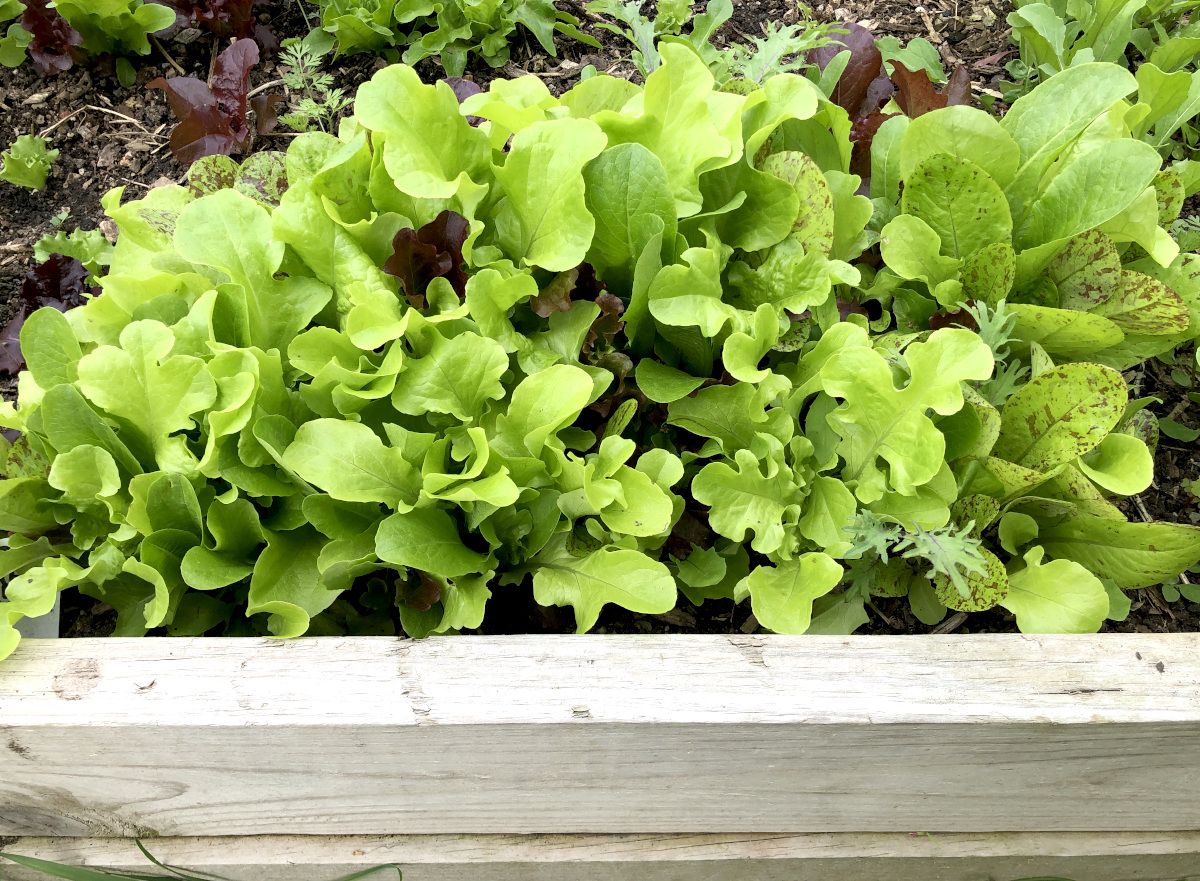
I grow Buttercrunch and leafy mesclun mix every year. I always let one or two heads bolt and produce seeds that I collect when they are dry and save for the next season.
I store all my seeds in this clear plastic photo case that comes with a handle and in the box, there are individual colorful single plastic cases. This one is so easy to use, due to the practical handle on top and easy snap-tight closure. I use each case color to identify the varieties. For greens I store them in green cases, flowers I store them in blue cases, different colors are so helpful when looking for specific seeds. I also label my individual cases so I can locate seeds super quickly. Because my seed box is plastic it does not mold, it is easy to wipe and maintain. So far, I have 2 cases of these and am happy with how well they held up.
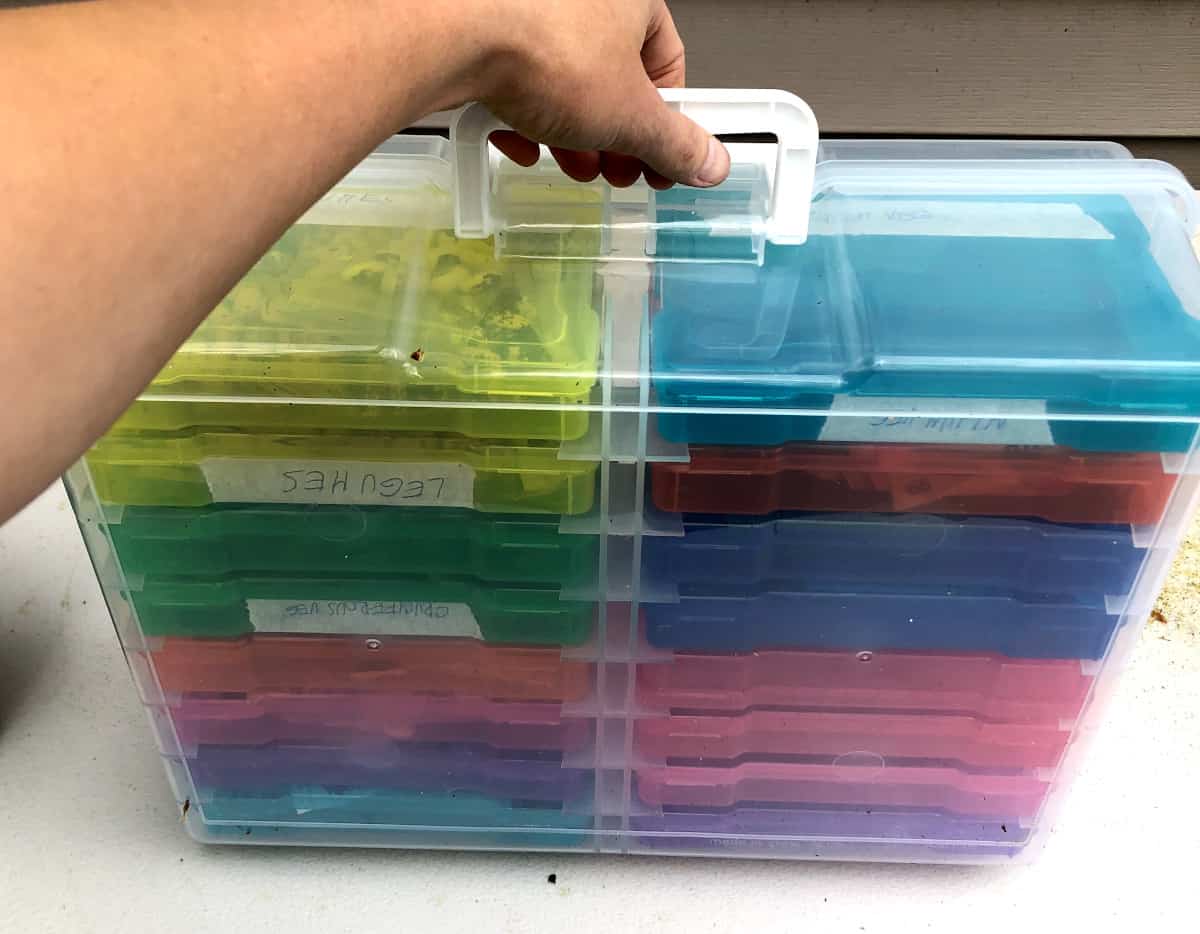
What is the best fertilizer for lettuce?
Lettuce is not a heavy feeder and does well in the soil full of organic matter. Fertilizer helps it to be more productive and grow faster. Fertilizer with lots of nitrogen is most suitable along with fish emulsion.
I use this fertilizer to fertilize my garden along with lettuce. Because it comes in a 1-gallon bottle and it is a concentrate, I dilute it by 10mill of fertilizer in 1 gallon of water. My garden looks great, including leafy lettuce and lettuce heads.
What vegetables can you grow with lettuce?
Because lettuce has shallow roots, is not a heavy feeder, and does well in partial shade, it can be planted as a companion plant with other vegetables that are heavy feeders, are tall therefore have plenty of space underneath and provide shade for the lettuce. It can be planted under tomatoes, peppers, and around cucumbers and other climbing plants that have plenty of space underneath. Because of the shallow roots, lettuce will do well with root crops too.
What should you not plant near lettuce?
Lettuce is not suitable to grow together with plants that require much space and grow relatively low and wide such as cabbages, cauliflower, broccoli, and brassicas. They also require similar nutrients as lettuce so they would compete not only for space, light, and air but also for nutrients.
Does lettuce grow well in pots?
Yes, lettuce is one of the best vegetables to grow in small spaces such as containers and pots, because it has shallow roots and does not require much spacing. It is also one of the most productive plants to grow in small spaces.
How to protect lettuce
Protect lettuce by covering it with garden netting. Use hoops to stretch the netting over the lettuce.
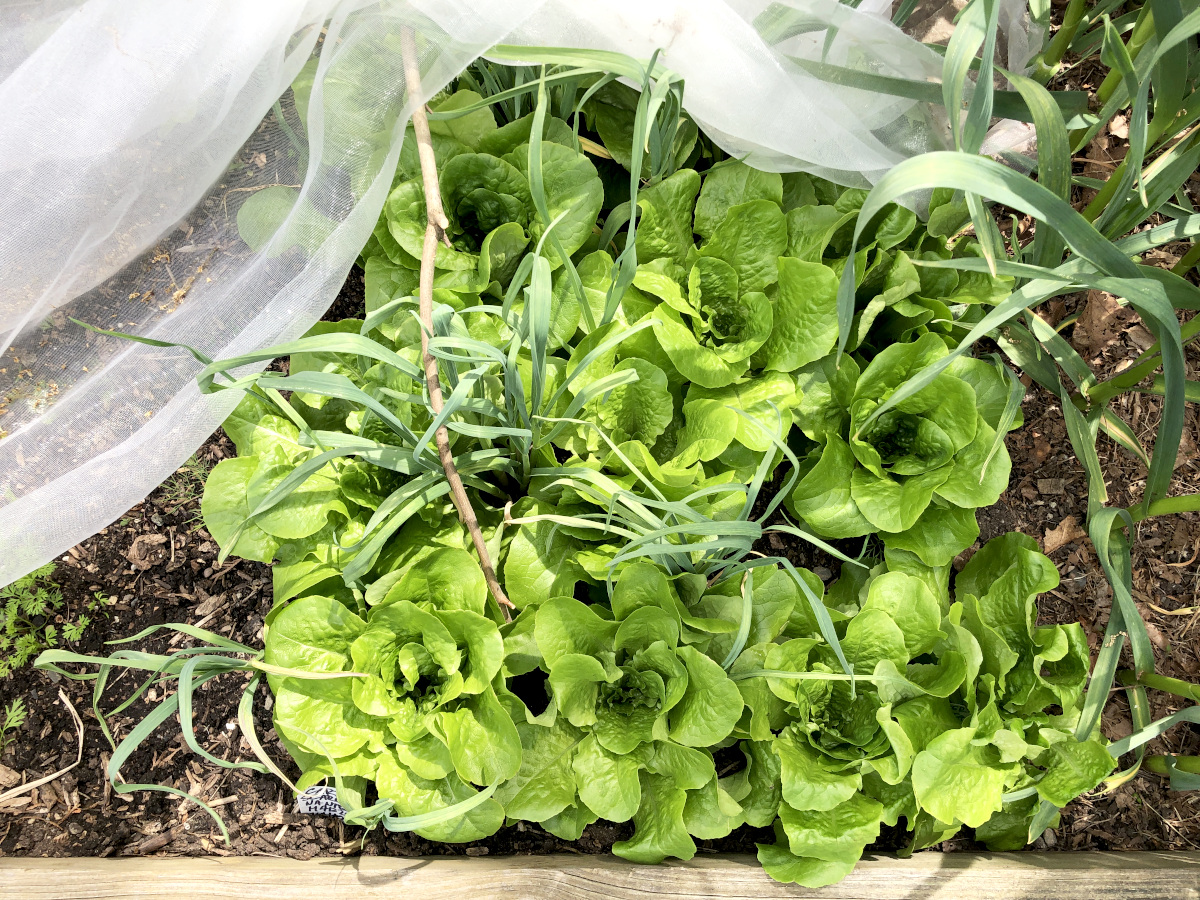
I use hoops and this garden netting to protect my lettuce. Have I not covered my lettuce with netting, it would be eaten by bugs, caterpillars, slugs, wild rabbits and the pest list would just go on and on.
I use soft plastic pipes cut into shorter sections and stick them as hoops in the garden beds. But recently I simply grow my hoops! Yes, I grow them! We cut down old old maples and oaks around the property and these stumps sent out new shoots every year. I let the shoots grow into about 5-6 feet tall sticks that I then harvest and use as hoops. They make awesome free hoops to support my netting.
A GOOD READ: This is how I protect my whole garden from pests and wild animals: How to protect vegetable garden beds
How to harvest lettuce seeds
Let the lettuce you grow bloom. The blooms will dry and form seeds. Let the flower heads dry. Once dry, harvest the flower heads, and by holding the flower head break off the white top chaffs and discard. The seeds remain in your hands inside the dry flower head. Crumble the flower head with seeds inside using your fingers. Store the seeds in plastic pouches, paper packets, or in an air-tight container of your choice. Store the seeds in a dry, dark, cool place.
I like to collect the seeds every year. Then in spring, I sow them and also find little lettuce seedlings popping up scared in my gravel driveway and all around my yard. I simply forage lettuce seedings from around my property and plant them in my garden beds. They just grow on their own! Who would not like that?
The seeds are easy to harvest, store and grow again and again!
As I said, my favorite lettuce is a leafy mix and Buttercrunch. I like colored mixed lettuce and beautiful tasty lettuce heads that look like roses. Please share with us what is your favorite lettuce to grow and why.
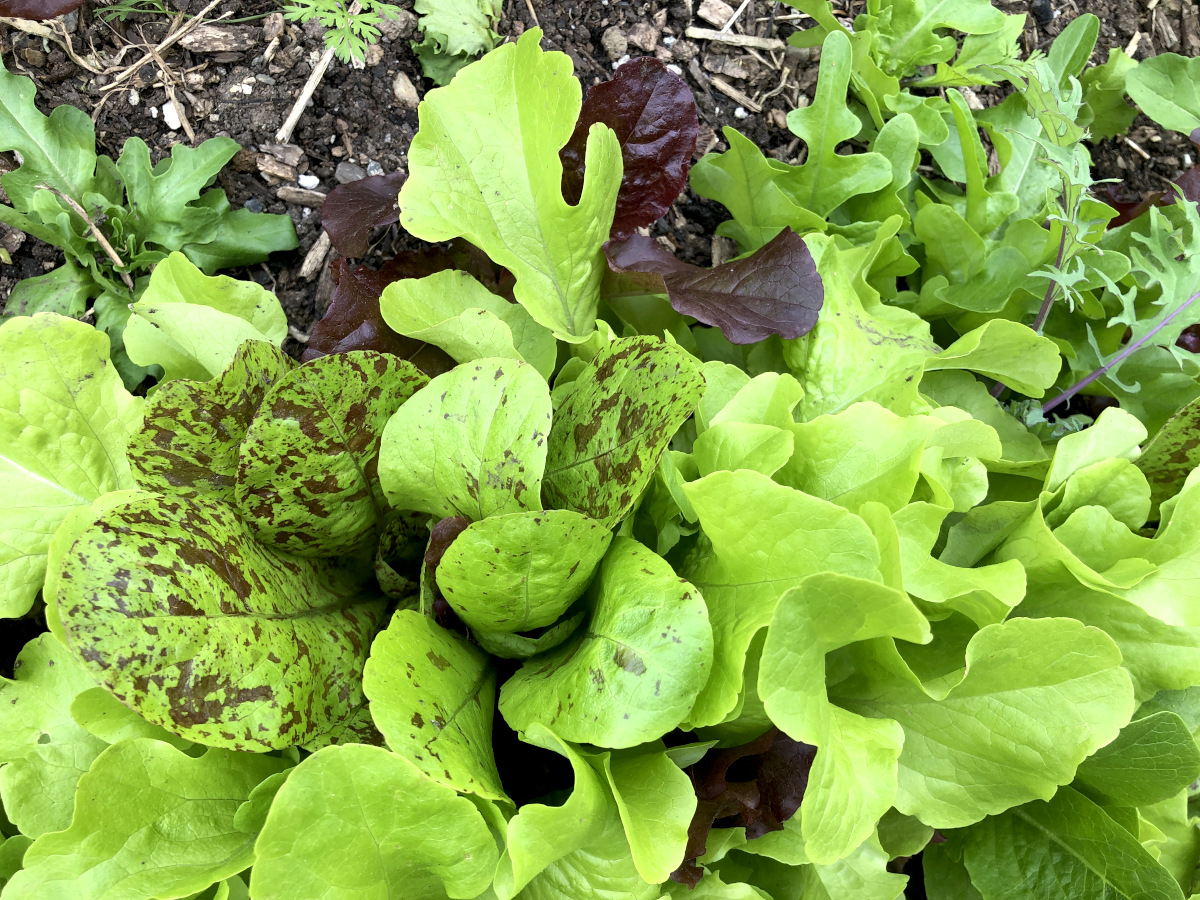
How to prevent seeds from being eaten
